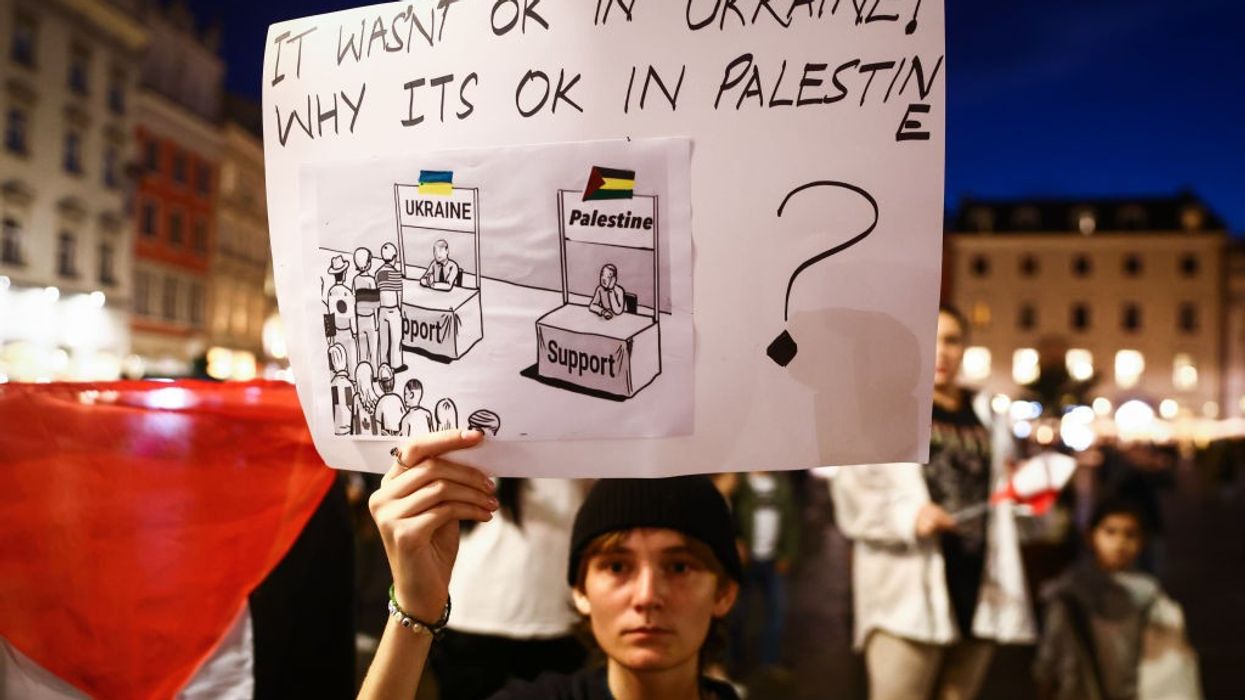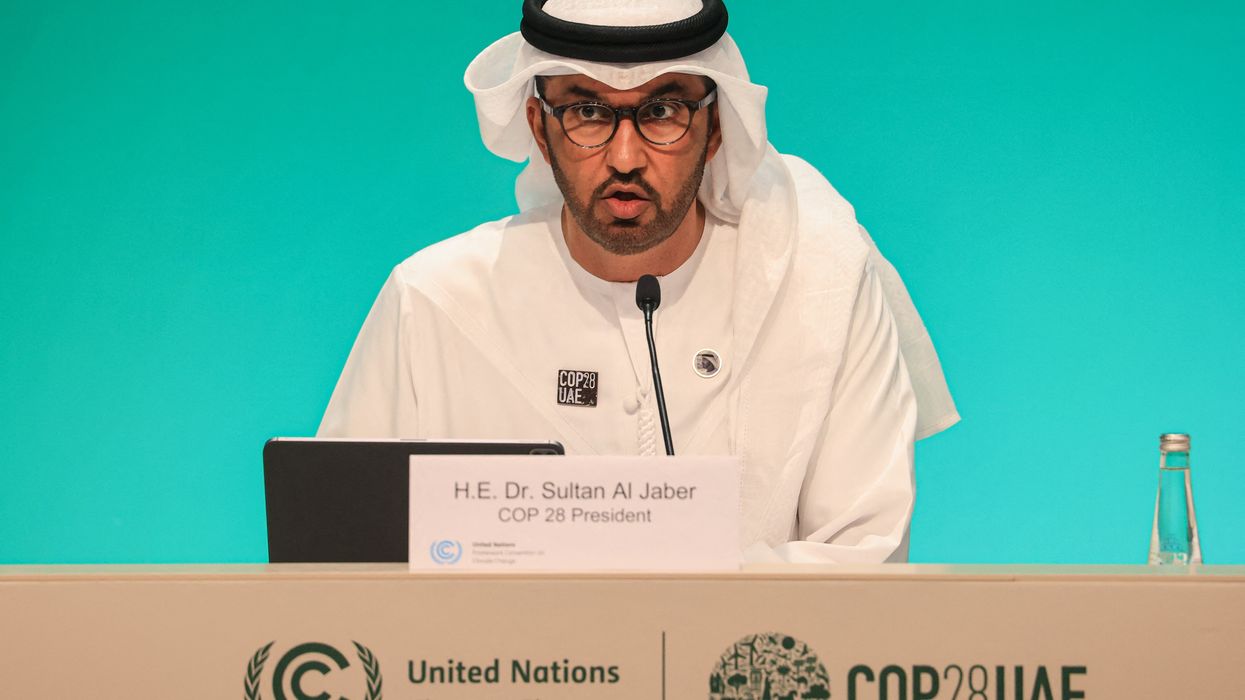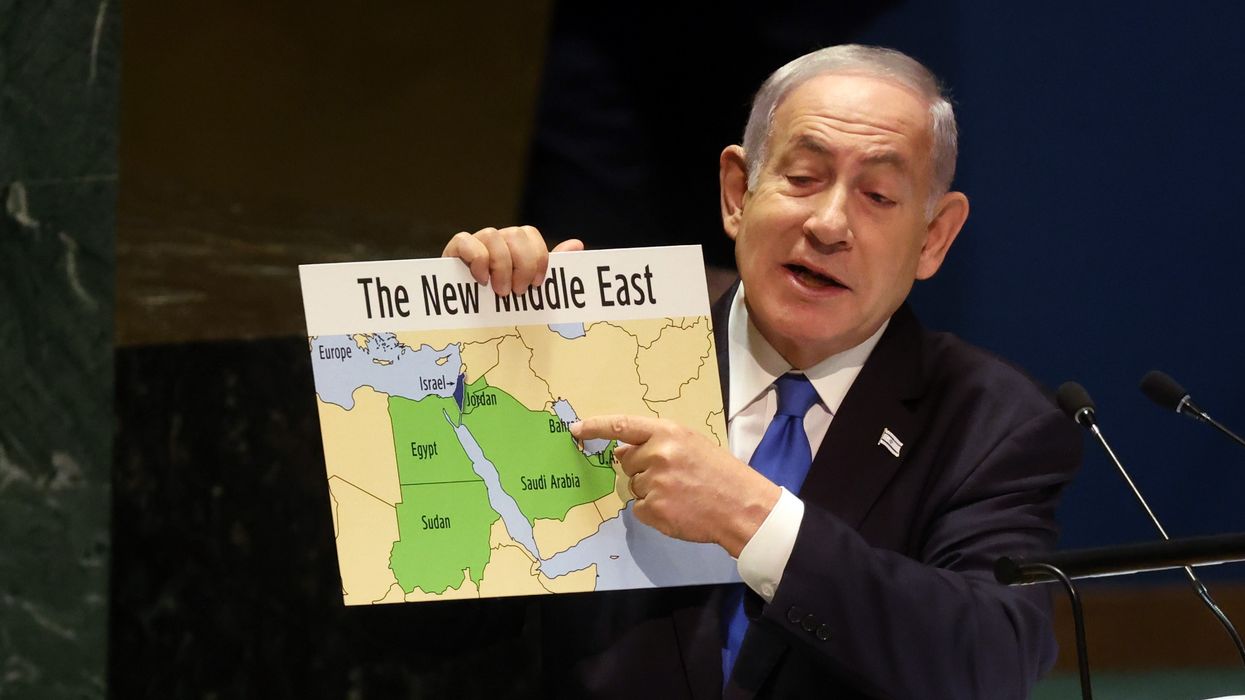By Supporting Putin’s Land Grab, Trump Is At Least Being Consistent
Trump’s insistence that it was in fact the Ukrainians who started the war with Russia, and that the fighting would end if they simply gave up, echoes the long-standing position of both U.S. political parties toward Palestine.
In the aftermath of U.S. President Donald Trump and Vice President JD Vance’s attacks on Ukrainian President Volodymyr Zelenskyy at the White House last Friday, a number of United States lawmakers, world leaders, and political commentators have expressed outrage at their defense of Russia’s invasion of Ukraine, as well as their victim-blaming rhetoric toward Zelenskyy and the Ukrainian resistance effort.
Their stance, however, is not unique: For decades, the United States has held similar positions regarding military conquests and occupations by Morocco and Israel.
The critical response to Trump’s willingness to allow Russia to annex parts of Ukraine has centered on the dangerous precedent of allowing a country to hold onto lands seized by military force. Former President Joe Biden, citing the “rules-based international order,” repeatedly noted the illegitimacy of any nation unilaterally changing international boundaries and expanding territories by force during his presidency. But in practice, the United States has not only tolerated similar illegal irredentism by allied governments, but has formally supported them.
In certain respects, Trump’s support for Russia’s war and occupation creates an opportunity for those who believe that Palestinians, Syrians, and Western Saharans have as much right to resist foreign conquest as Ukrainians to advocate for the self-determination of all occupied peoples.
Trump’s insistence that it was in fact the Ukrainians who started the war with Russia, and that the fighting would end if they simply gave up, echoes the long-standing position of both U.S. political parties toward Palestine. And every presidential administration since 1993 has insisted that the Palestinian Authority allow Israel to annex large swathes of the West Bank territory seized in the 1967 war as part of any potential peace agreement, and has then blamed the Palestinians for their alleged failure to compromise.
During the first Trump administration, the U.S. also became the first and only country to formally recognize Israel’s 1981 annexation of the Golan Heights—which had been condemned and declared “null and void” by the United Nations Security Council—as part of Israel, in a decision that Biden later upheld. In the past few months, Israel has seized additional Syrian territory and has vowed to remain there, and has maintained occupation forces in southern Lebanon in defiance of its cease-fire agreement.
Similarly, in 2020, the United States became the first country to formally recognize Morocco’s annexation of the entire nation of Western Sahara, a full member state of the African Union, in defiance of the United Nations and the International Court of Justice in 1975. Biden upheld that decision as well.
During the Biden administration, these endorsements of illegal annexations by Israel and Morocco hurt the U.S.’s credibility in marshaling support for Ukraine, particularly among the Global South. At the United Nations, the U.S. was repeatedly called out over its support for Morocco and Israel’s takeovers by critics who argued that the U.S. opposed Russia’s invasion of Ukraine out of geopolitical interests rather than principle, in a move they called hypocritical. Now, the U.S. is showing consistent support for territorial conquests, including those of Russia.
Opposition to ongoing U.S. military support for Ukraine is not limited to Kremlin apologists, however. Pacifists, neorealist international relations experts, and others have argued that while Russia’s invasion of Ukraine is unjustified, the prospect of extending a potentially unwinnable war of attrition in the hopes of recovering the 19% of Ukrainian territory under Russian control is simply not worth the human and financial costs. The likely possibility of additional casualties in the tens of thousands—and the risk, however remote, of nuclear exchange—has led even some of the most bitter critics of Russia’s actions to call for a negotiated settlement.
The strongest argument against such a compromise is that it would reward Russia’s aggression and tempt Russian President Vladimir Putin to engage in further territorial expansion, endangering the Baltic Republics and other areas once controlled by the Russian Empire and the Soviet Union. However, given how the U.S. has formally recognized illegal annexations of territories seized by force by Morocco and Israel, allowing Russia's illegal expansionism to remain in place, at least temporarily, would not establish a precedent: The precedent has already been set. And like Russia, Israel and Morocco have expressed expansionist ambitions beyond their current occupied territories as well.
In any case, Trump’s opposition to supporting Ukraine is neither pacifist nor utilitarian. He is supporting Putin and blaming Ukraine for the war. He is siding with an authoritarian aggressor against a democracy fighting for its very survival. The backlash against Trump’s support for Russia’s invasion, occupation, and illegal annexation of Ukrainian territory is therefore quite appropriate.
The denial of agency to the Ukrainians, including the false charge that the 2014 Maidan uprising was a U.S. coup and that Ukrainians are simply fighting a proxy war rather than defending their nation from a foreign invasion, runs parallel to claims that Palestinian, Lebanese, and Syrian resistance to the Israeli occupations is a proxy war on behalf of Iran and that the Western Sahara struggle against the Moroccan occupation is a proxy war on behalf of Algeria. No one under foreign military occupation needs to be forced by a foreign power to defend their homeland.
In addition to his consistent support for the occupying forces of Israel, Morocco, and now Russia, Trump has repeatedly expressed his desire for the United States to become an occupying power in its own right, as exemplified by his plan to forcibly relocate all remaining Palestinians in Gaza and annex it as U.S. territory. Similarly, his recent threats to seize Greenland, Panama, and even Canada harken back to the U.S. expansionism of the late-19th century.
In certain respects, Trump’s support for Russia’s war and occupation creates an opportunity for those who believe that Palestinians, Syrians, and Western Saharans have as much right to resist foreign conquest as Ukrainians to advocate for the self-determination of all occupied peoples. To allow any of these illegal occupations to become permanent puts the entire post-World War II international legal order in jeopardy and seriously threatens international peace and security. Uniting the international community to force an end to these occupations, preferably through nonviolent means, is imperative. The “rules-based international order” must be upheld regardless of the geopolitical orientation of the parties involved.


